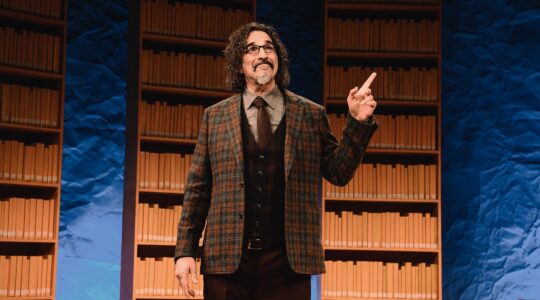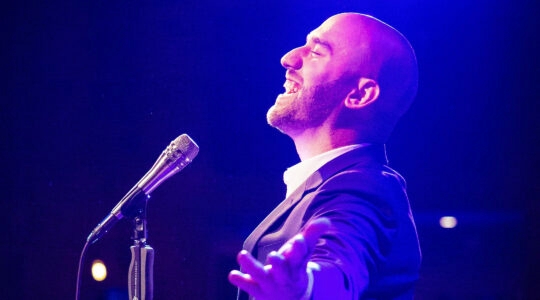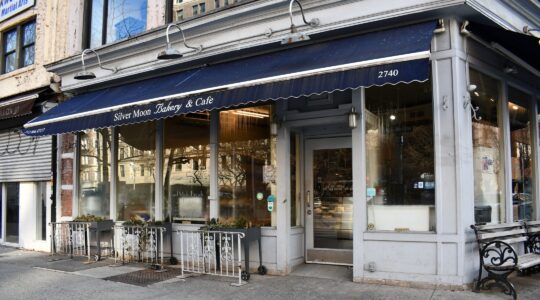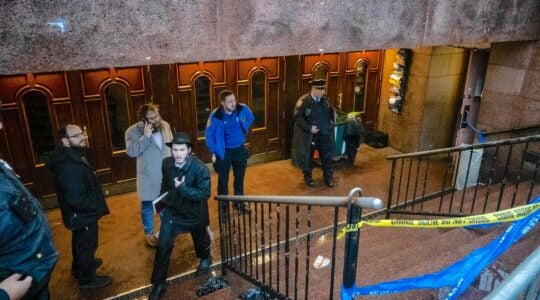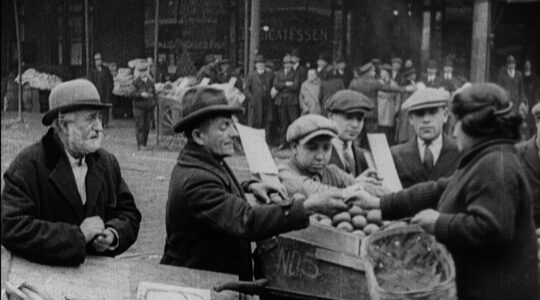Up in an attic are faded photos of old Joe Kushner ó young and dashing Joe Kushner in the picture ó on a wide, sloping Catskill lawn, near tall flowers by the casino porch. It is a 1930s August. You can feel the heat, the languor, the clockless afternoon of a hotel summer. Kushner, in light jacket and white ducks, stands behind his drum kit, hair slicked, sticks in hand.In another photo, heís with his klezmer band on that same lawn. Theyíre posed in a jokey way, grinning, a pinwheel of exaggeration, wailing music put to frozen motion: heads cocked, bodies rocking, the sax player pointing one way, the fiddle player another way, the drum sticks yet another.Kushner was in his 20s then, and the sound of jazzy klezmer was still heard in Bronx wedding halls and Galician kitchens and on Victrolas with the big horn. Klezmer wasnít the stuff of nostalgia then; it was in its final days of youth when it thought it would be young forever; as young as summer, as young as the girls who talked sweet with Kushner in the casino, as young as the shtetl wedding bands that were wailing a final Mizinke even as they didnít know it. The nights were still wild, the bands and dancers were still sweaty, and in the words of the old song, Isaac-Mazik could still see bubbe dance a Kozik. This was the 1930s and klezmer wedding bands were deep, deep into overtime.Father ìwas a sideman,î says his son Sy, ìplaying for different leaders. They didnít use the term klezmer. It was Jewish music, period. Back then, I only heard the term ëklezmerí in a derogatory way: ëOh, youíll grow up to be a klezmer musician?í That meant someone whoíll spend his life playing menial jobs. That was the meaning of it back then. But my dad had 78s at home, and weíd listen. There was music in the house.î
Summer ended, as summers always do, and Joe Kushner went to work for the New York City Transit Authority, listening to the rhythms of rattan-seated subways, hearing music in the rails and rattling. After hours, he went back to the drums with Jewish bands. In the 1950s, he took his young boy Sy with him on weekend gigs where the drummerís kid played the accordion.
In the 1990s, Sy played klezmer, too, taking along his young son, Aaron. The grandson remembers a grandfather, now passed away, an old zayde, forever young with a set of drums.The Kushners are the great biblical begats of klezmer music. Just about every klezmer musician today seems to be a foundling, a wandering soul finding a home in this great house of music. The music is trans-generational but not the families. The Kushners, though, are a grand exception.
The music lives. Next Sunday, Oct. 31, Sy Kushner, 56, will not just be taking Aaron, 15, to a gig; for the first time theyíll be sharing it. At the Tonic, 107 Norfolk Street, between Delancey and Rivington (212-358-7501), the Sy Kushner Ensemble will double-bill with Aaron Kushnerís Klezminors. The Klezminors ó four high schoolers ó are beginning to grasp the principles of flight, playing to cheering thousands last summer at Damrosch Park, shopping a demo, and soon to be appearing at Merkin Concert Hall.
The bands will play separate sets and jam together. Then Sy ó considered the king of the klezmer accordion and part of the Kapelye group, as well ó will duet with Aaron: accordion and electric guitar. No, you didnít hear that instrumental combo in 1913, but the living klezmer grows and stretches. Anyone whoís heard Zydeco or Paul Simonís ìGracelandî knows that the accordion and electric guitar can be married in ways that are magical.The shows (at 1:30 p.m. and 3 p.m.) are being billed as ìThe Klezmer Legacy: Two Generations In Harmony,î the passing on of a tradition from father to son. The Tonic may be the perfect room, a remnant of the old Kedem winery. Now an avant-garde music club, the Tonic features ìKlezmer Sundays,î curated by David Krakauer, the great clarinetist.Up in an attic are pictures of Sy Kushner in the Catskills of 1960, when Syís band debuted at Camp Hi-Li White Lake on a July night. Walking back to the bunks, to the rhythm of the crickets, kids were talking about a klezmer sound, though few, if any, knew the word. By 1966, Kushner was in the recording studio with sudden classics such as ìSiman Tov, Mazel Tov,î a song we think of as ageless but never put to disk before Kushner.
In recent years, Kushner has turned to traditional klezmer from the early 1900s, which he lovingly transcribes from old 78s. He finds a place for even the old instruments, with his ensemble including not only the accordion and string bass but also the klezmer tzimblum (or tzimble), a stringed instrument played with mallets, like a hammer dulcimer, but with a differing sound.Aaron plays sax with the Klezminors, moving to acoustic guitar for the quieter moments of Tumbalalaika. That old chestnut is played so fresh, it couldnít have sounded any more enchanted in 1940, when first heard in America.Father and son will together play a dance called the Serba Popilar. Sy says, ìWe learned that from an RCA Victor recording going back to 1923. It sounded in my head like something Aaron could get his teeth into. He came over with his electric guitar, fuzz boxes and distortion pedals, and ran it down. Itís quite a virtuosic piece to play.ìWhatís so exciting is to hear how the music evolves. Hereís this piece, recorded in 1923 by the Ukrainian Jewish Ensemble, and now it sounds great with a rock guitar.î
Aaron says he feels immersed in klezmer after years of attending Klezcamp, and other Yiddish culture festivals with his family since childhood. Like his father, he grew up with music in the house.ìI doubt many Jewish kids even know what klezmer is,î says Aaron, ìbut it moves me. This is Jewish music, and Iím exploring it just as Irish kids would explore Irish music.î
If, as the poets say, baseball boils down to ìfathers playing catch with sons,î then klezmer is nothing if not zaydes playing 78s with grandsons, conversations between generations, every song a love song in music rooms where wine once flowed and flows again.
The New York Jewish Week brings you the stories behind the headlines, keeping you connected to Jewish life in New York. Help sustain the reporting you trust by donating today.
